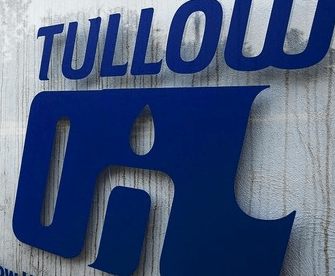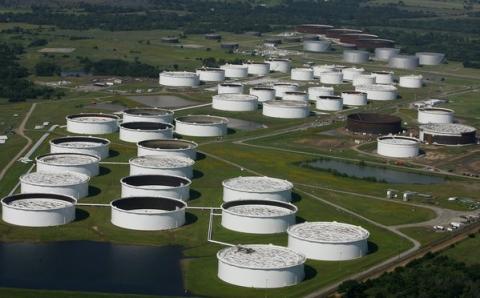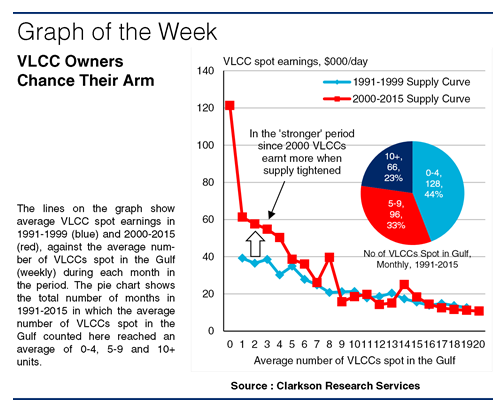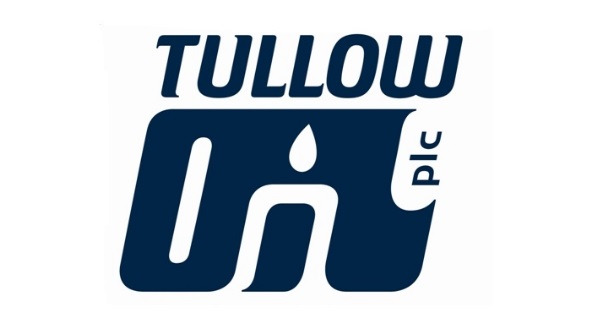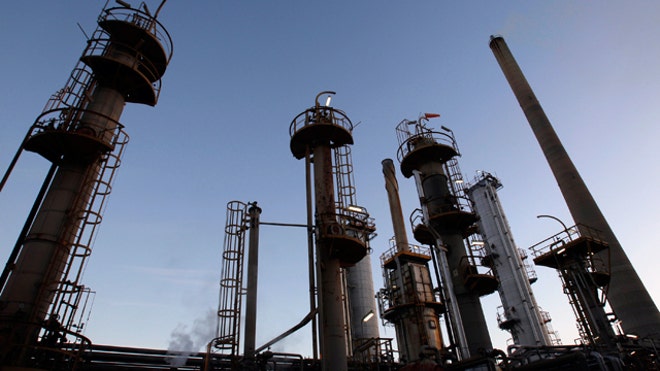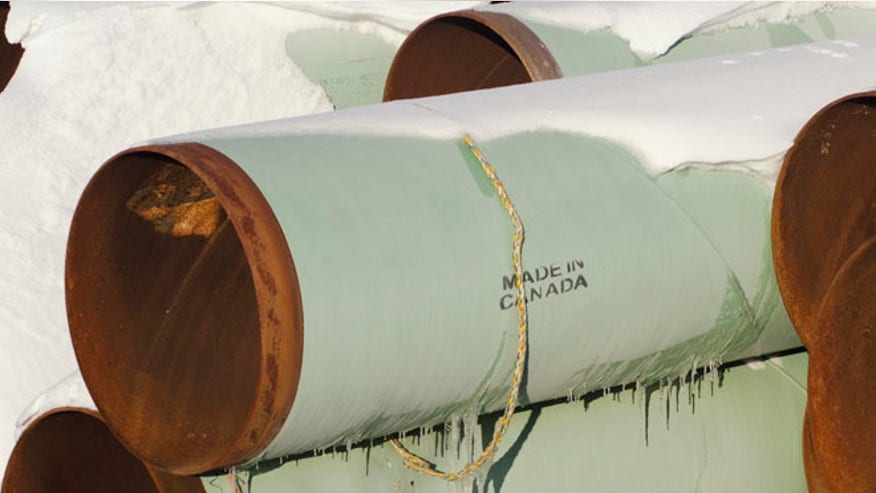Cameroon soldiers stand guard at a lookout post as they take part in operations against the Islamic extremists group Boko Haram, their guard post is on Elbeid bridge, rear, that separates northern Cameroon form Nigeria’s Borno state near the village of Fotokol, Cameroon.
N’Djamena, Chad (
TFC) – As of this weekend, the Nigerian extremist organization, Boko Haram, has officially pledged its
allegiance to the Islamic State (ISIS) of Iraq and Syria. This news comes only 2 weeks after the United States Africa Command (AFRICOM) began its “Operation Flintlock 2015″ in Chad’s capital city. In fact, the “diplomatic” military convention concludes today. Two days after Abrubaka Shekau, leader of Boko Haram, announced his solidarity with ISIS.
“We announce our allegiance to the Caliphate….and will hear and obey in times of difficulty and prosperity,” said Shekau on
Saturday. Boko Haram, roughly translated to “western education is forbidden,” is an extremist Sunni sect that has been strengthening in numbers and reeking havoc throughout Northwestern Africa, primarily Nigeria, Chad, Tunisia and Cameroon, since 2009.
On March 6, the Fifth Column
reported that Saudi Arabia is requesting US ground troops as “a self-serving effort to keep the nation of Iraq as a buffer against Iran.” The article explains the differences between the competing religious sects of Iraq, home of ISIS, and how the divided nation is on the brink of dissolution. How convenient for the US that just as its media-darling terrorist enemy is beginning to lose influence, another group of Islamic extremists has announced its undying allegiance to the group. This time, however, the scary Islamic terrorists are from the oft-neglected region of genocide, despair and division: Africa.
Both groups are Sunni. Both practice Sharia Law. Both are smokescreens for the real reasons the US is interested in either region: Oil and Natural Gas.
Nigeria is where Boko Haram originated. It started as little more than a street gang in the early 2000s. However, its members and tactics grew increasingly more extreme over the course of the first decade of the new millennium. In 2009, the former leader of Boko Haram,
Mohammed Yusuf, was publicly executed by Nigerian Police. Yusuf was replaced by Boko Haram’s current leader, Abrubaka Shekau. 2009 and 2010 saw some of the worst violence in Nigeria in recent memory.
Boko Haram militants clashed with Nigerian soldiers in an attempt to free their spiritual leader from prison. During the skirmish, Boko Haram saw at least 30 of its members killed and the death of one Nigerian soldier. Less than 1 year later, Shekau led an assault on
Bauchi Prison, killing 5 people and freeing over 700 inmates. Bold, violent attacks against the Nigerian United Nations building and several police and military outposts followed into 2011.
As the western part of the world celebrated the New Year with champagne and novelty sunglasses, hiding tipsy eyes full of hope as they watched the ball drop in Times Square, Boko Haram ravaged the fishing community of
Baga, killing nearly 2000 people in the first days of January, burning the village to the ground like Norse Vikings. It is estimated that between 5000 and 7000 lives have been lost during the rise of Boko Haram and its clash with the categorically corrupt Nigerian Military and Police.
In a 2012 article published by the
New York Times, Jean Herskovits bluntly states, “There is no proof that a well-organized, ideologically coherent terrorist group called Boko Haram even exists today. Evidence suggests instead that, while the original core of the group remains active, criminal gangs have adopted the name Boko Haram to claim responsibility for attacks when it suits them.”
The article claims that Nigeria’s State Security Services issued a statement in November of 2012 stating that 4 “criminal syndicates” were sending threatening messages to the Nigerian Government in the name of Boko Haram. 3 of those 4 “criminal syndicates” were run by Southern Nigerians that do not even identify as Muslim. One of which has leaked information to the US Embassy that caused Boko Haram to retreat from and evacuate a hotel it had captured.
Herskovits goes on to state that the root cause of this inexcusable violence lies in the overwhelming poverty and hopelessness of Nigerian society.
Nigeria has the strongest, most robust
economy in Africa. Despite this fact, 70% of its populace lives on less than $1 a day. Massive wealth. Massive economic inequality. Terrorists blamed for the entirety of a country’s problems. Does any of this sound familiar?
Historically, the US has been mostly ambivalent to the genocide, terrorism and famine that is daily life for most of Africa. Several years of constant pressuring were needed before the crises in Sudan, Uganda, and Rwanda were even recognized as an issue by the US Government. That is all about to change, but not for humanitarian reasons.
World Socialist Website reported earlier this month that US and NATO forces began a massive series of War Games simulations during Operation Flintlock 2015. The simulations will focus on “interoperability and capacity-building among African, Western and US counter-terrorism forces,” according to the Pentagon’s press release. What regions are the focus of these War Games? None other than Nigeria, Chad, Cameroon and Tunisia, the regions being affected by the Boko Haram insurgency, of course. US and African military officials made it clear that these “War Games” could translate to actual warfare against Boko Haram, or more accurately the regions associated with Boko Haram, in the future.
Under the banner of “Warfare” the diplomatic title of
Defense News’ article on the military expansion in West Africa reads, “Us Special Ops Build Bridges in Africa.” The article says 1300 troops from African and NATO countries are gathering for a “variety of tactical engagements.” 673 African forces, 365 NATO forces and 255 US personnel gathered in Chad to take part in “training objectives [that will] help build relationships reinforcing the capacity of participating militaries to secure a stable environment for growth and development in the nations of the region,” says Chadian Brig. Gen. Zakaria Ngobongue.
The article says Operation Flintlock is “tailor-made for the direction that the US Special Operations Command (SOCOM) has set for the troops that it is training and equipping to operate in a post-Afghanistan and Iraq world.”
Why the sudden interest in Africa? Well, according to a report done by
KPMG Africa, Nigeria has the second largest proven oil deposits in all of Africa, second only to US-ravaged Libya. Proven deposits have grown by nearly 120% in the last 30 years. The report outlines Western desire to plunder the virtually untapped natural resources of the region by saying, “Africa has for years been seen by western and Asian markets as a means to diversify away from too deep a dependence on Middle Eastern oil.”
Currently, the US imports about 25% of its crude oil from West Africa. KPMG goes on to say that the percentage of oil exported from Africa to China and India has steadily increased since 2007. In 2011, exports to China and India were up from 10% and 5%, to 14% and 8%, respectively. Considering China’s burgeoning economy and expanded presence in the region, as well as its shaky alignment with Russia, it only makes sense for the US to pounce now and crush the region into servitude before a competitor gets the chance.
KPMG’s report says the biggest investment opportunity lies in the construction of an oil refinery network. Libya has the largest oil reserves, but due to civil war and NATO bombings, exporting these reserves is difficult. Nigeria, however, is the continent’s leading oil exporter, despite its smaller reserves. Be that as it may, it has virtually no refining system established. It exports crude oil only to have to import refined oil back into the country at an extra cost. KPMG states that corruption, theft, and poor maintenance prevent any sustainable refining infrastructure from existing.
The report offers insight into why Africa’s strongest economy has allowed 70% of its population to live in disgraceful poverty by saying, “the system was rotten from the start and has long been crippled by patronage networks, theft, corruption and mismanagement that have seen tens of billions of dollars disappear.” Just like the rest of the “free” world, any time oil becomes part of the equation, greed, corruption and poverty are the natural bi-products and those that don’t hold stock in the oil companies suffer and starve. In the oil-producing sectors of Africa, income inequality is the highest and “many locals see fuel subsidies as the only benefit of living in an oil-rich nation.”
If you live in an aluminum shack with no plumbing built by missionaries, I would venture to guess cheap oil is not your primary concern.
You may be wondering who or what KPMG is. After scouring its website for an answer to that question I found no definitive conclusion. It appears to be some kind of analytics subsidiary of a private equity firm. It operates out of the Cayman Islands under the umbrella of KPMG International, which operates out of Switzerland. The Cayman Islands and Switzerland are the “economically liberal” tax-haven states favored by bankers and politicians like Mitt Romney. Romney and his equity firm, Bain Capital, were indicted for
Racketeering in January.
Bain Capital had at least $30 million in 138 individual equity funds in the Cayman Islands as of 2012. That has to be a good sign, right?
KPMG released another
report in 2013 outlining the possible fiscal benefits of launching an invasion…I mean refining venture in Nigeria. Despite the rampant corruption of the Government, KPMG is delighted at the many tax breaks that apply to foreign investors.
The
Nigerian Investment Promotion Commission Act (NIPC) of 1995 completely deregulated the flow of capital from Nigeria to foreign investors. Under the presidency of Goodluck Jonathan, a plan known as 20:2020 has been put into effect. The goal of 20:2020 is to make Nigeria one of the top 20 economies by the year 2020. Goodluck Jonathan is a Christian politician born in South-Nigeria. He took office in 2010 and has consistently ignored the needs and demands of the impoverished, predominantly Muslim, regions of Northern-Nigeria. The epicenter of Boko Haram.
Goodluck has made it possible for oil companies to avoid any and all taxation by the Nigerian government. According to the KPMG, the only restrictions are applied to arms trafficking and narcotics. Not only are there no regulations, but there are a plethora of tax INCENTIVES for foreign investors:
KPMG Investment incentives − General
1. Nigerian companies with a minimum of 25% foreign equity are exempt from payment of minimum tax (tax paid by a company that has no taxable profit or whose taxable profit is lower than the minimum tax).
2. Income/interest earned from federal government short-term securities is exempted. Income/interest earned from bonds issued by the federal, state and local governments, and corporate bodies (including supra-nationals) is also exempted from the taxes.
3. Proceeds from the disposal of the bonds and securities listed are exempted from Value-Added Tax (VAT).
4. Investment allowance of 10% on qualifying expenditure on plant, machinery and equipment.
5. Rural investment allowance of between 15% and 100% of the cost incurred in providing facilities/ infrastructure in rural areas.
6. Capital allowance of 95% in the first year in respect of plant and machinery purchased to replace old ones.
7. Tax exemption of between 40% and 100% of the interest earned on foreign loans advanced to companies in any industry, where the terms and tenure of the loan satisfy the conditions specified in the law.
Under unspecified circumstances, a company, foreign or native, can achieve “Pioneer Status” and qualify for even more fiscal incentives:
1. Capital expenditure on qualifying assets incurred during the tax relief period is treated as having been incurred on the first day following the tax relief period. Pioneer companies are therefore able to fully claim capital allowances on such assets.
2. Tax free dividends during the holiday period.
3. Losses in the relief period may be set off against profits after the end of the period.
It is easy to see how Goodluck Jonathan could stand in front of a podium and pitch this information in a positive way. Foreign investors are helping to build a strong Nigerian economy! It’s easy to see how this propaganda could benefit his campaign. It is easy to see how corrupt, corporate influence is about to devastate an already unstable region. It is easy to see the parallels between Nigeria and it’s spiritual-predecessors in the Middle East.
The reality is fairly straightforward. Saudi Arabia is using its controling-stake in the oil market to pit Russia, China, and the US against each other in a bidding war. Nigeria, however, seems to have made it perfectly clear that its loyalty lies with the US. Perhaps it learned from Saudi Arabia that any and all evil is forgiven when Uncle Sam’s pipelines pump your crude.
American dependence on oil is not going to end any time soon. We consume almost 19 million
barrels of oil per day. Despite overwhelming opposition, fracking continues to ravage the southern part of the country, causing near-daily earthquakes and explosions in states like
Oklahoma. The
Koch brothers spent almost a billion dollars to buy the Republican Party and ensure their Keystone XL pipeline gets built.
Oil’s closest ally, the Defense Sector, will undoubtedly be right behind them to jump on the lucrative African bandwagon. Nigeria’s defense budget is 25% of its
GDP. Oddly enough, Nigeria’s GDP has more than
tripled in the last decade or so. It’s gone from less than $100 billion in the 90s to $414 billion today. One more thing ol’ Goodluck can attribute to himself during his campaign.
Last September, the Pentagon opened its third
drone hangar in West Africa, its second in Niger, northern neighbor to Nigeria. The construction of this hangar came in tandem with an uncharacteristic push from the French military. The French permanently deployed over 3000 troops to West Africa in a “counter-terrorism” measure after the disappearance of hundreds of school girls in Nigeria, attributed to Boko Haram, last fall. According to the Washington Post, the US and France were “working hand in glove as they steadily expanded their presence in impoverished West Africa.” French President Francois Hollande announced his intention to further beef up France’s military presence in Mali, Chad, Niger and Burkina Faso.
Predator drones are manufactured by
General Atomics. General Atomics has a long, storied history of being acquired and sold by oil companies like Chevron, Dutch Shell, and Gulf Oil.
Other defense contractors like the
Carlyle Group, Oshkosh, and
Dyncorp make
billions from their weapons being sold to the Saudis and UAE.
Dyncorp, specifically, was accused of being involved in
human trafficking in 2006. Dyncorp also had a special contract under Operation Iraqi Freedom that gave it the ability to sell the weapons that murdered the population and destroyed the country and then provide “humanitarian aid and reconstruction to conflict and post-conflict areas” through a partnership with World Wide Humanitarian Services (WWHS), a subsidiary of Dyncorp. That’s like selling someone an axe, making them pay you for cutting their leg off and then making them pay you for sewing it back on. Then, writing off the surgery as a tax-deductible act of charity. In our world, war is charity. True, evil brilliance.
Why not take this business model to Africa?
It is easy to imagine the future awaiting Africa. It is easy to imagine the Koch brothers engineering the election of the next George Bush using the same, tired hyperbole to generate fear and hate for an entire continent. It is easy to imagine “patriots” waving flags in support of “American Liberty” while drones circle above the heads of the poverty-stricken favelas of Africa painting digital targets on the heads of people who have nothing to do with any of this. It’s all so familiar.
The world is a desert snowglobe being shaken by the hands of oil companies and defense contractors. No matter how or where the sand settles, they always come out on top.
